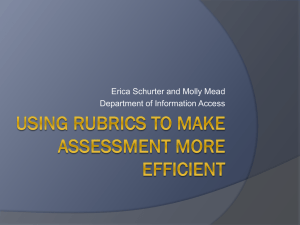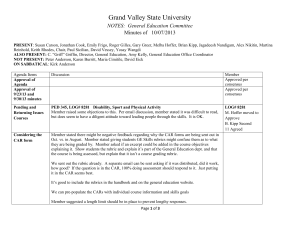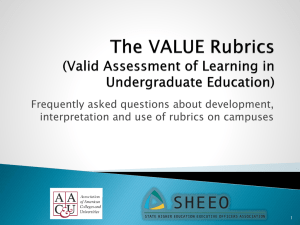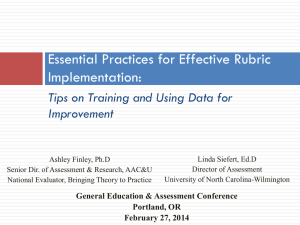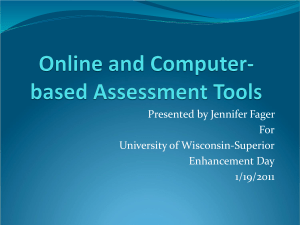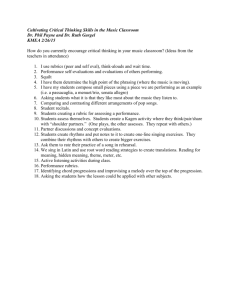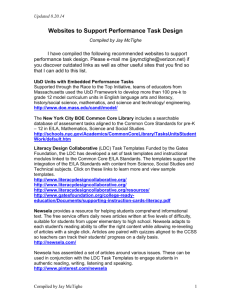Implementing Performance Assessment
advertisement
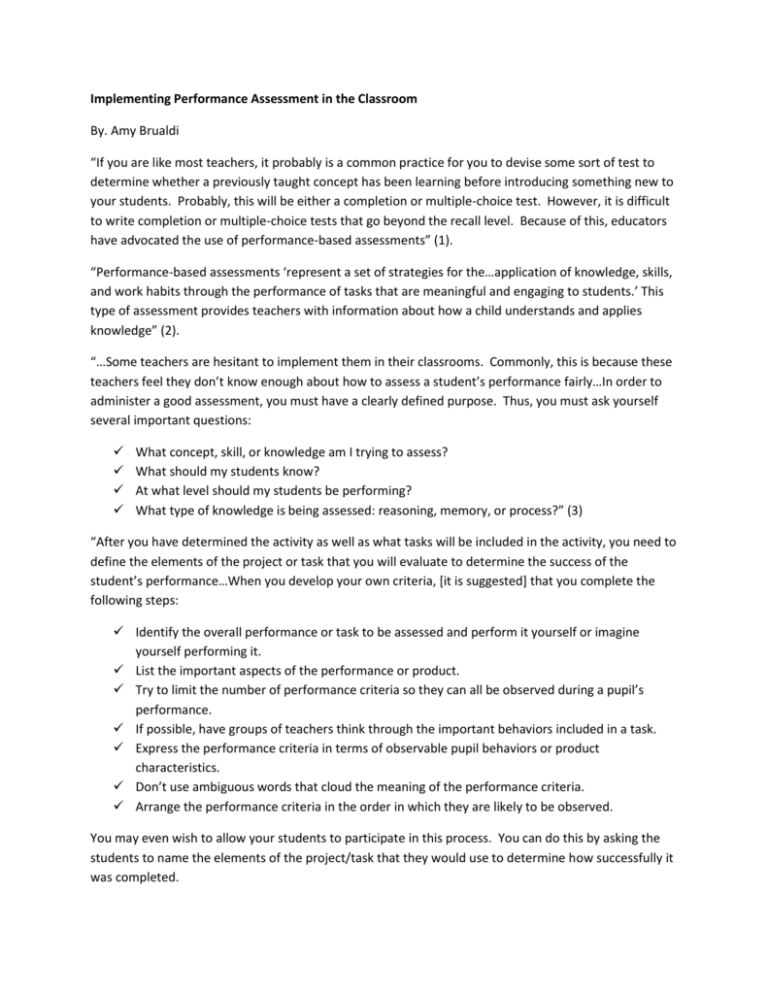
Implementing Performance Assessment in the Classroom By. Amy Brualdi “If you are like most teachers, it probably is a common practice for you to devise some sort of test to determine whether a previously taught concept has been learning before introducing something new to your students. Probably, this will be either a completion or multiple-choice test. However, it is difficult to write completion or multiple-choice tests that go beyond the recall level. Because of this, educators have advocated the use of performance-based assessments” (1). “Performance-based assessments ‘represent a set of strategies for the…application of knowledge, skills, and work habits through the performance of tasks that are meaningful and engaging to students.’ This type of assessment provides teachers with information about how a child understands and applies knowledge” (2). “…Some teachers are hesitant to implement them in their classrooms. Commonly, this is because these teachers feel they don’t know enough about how to assess a student’s performance fairly…In order to administer a good assessment, you must have a clearly defined purpose. Thus, you must ask yourself several important questions: What concept, skill, or knowledge am I trying to assess? What should my students know? At what level should my students be performing? What type of knowledge is being assessed: reasoning, memory, or process?” (3) “After you have determined the activity as well as what tasks will be included in the activity, you need to define the elements of the project or task that you will evaluate to determine the success of the student’s performance…When you develop your own criteria, [it is suggested] that you complete the following steps: Identify the overall performance or task to be assessed and perform it yourself or imagine yourself performing it. List the important aspects of the performance or product. Try to limit the number of performance criteria so they can all be observed during a pupil’s performance. If possible, have groups of teachers think through the important behaviors included in a task. Express the performance criteria in terms of observable pupil behaviors or product characteristics. Don’t use ambiguous words that cloud the meaning of the performance criteria. Arrange the performance criteria in the order in which they are likely to be observed. You may even wish to allow your students to participate in this process. You can do this by asking the students to name the elements of the project/task that they would use to determine how successfully it was completed. Having clearly defined criteria will make it easier for you to remain objective during the assessment because you will know exactly which skills and/or concepts you are supposed to be assessing. If your students were not already involved in the process of determining criteria, you will usually want to share them with your students. This will help students know exactly what is expected of them” (3). “A rubric is a rating system by which teachers can determine at what level of proficiency a student is able to perform a task or display knowledge of a concept. With rubrics, you can define the different levels of proficiency for each criterion. As with the process of developing criteria, you can either utilize previously developed rubrics or create your own. When using any type of rubric, you need to be certain that the rubrics are fair and simple. Also, the performance at each level must be clearly defined and accurately reflect its corresponding criterion (or subcategory). When deciding how to communicate the varying levels of proficiency, you may wish to use impartial words instead of numerical or letter grades. Words such as ‘novice,’ ‘apprentice,’ ‘proficient,’ and ‘excellent’ are frequently used” (4). “Teachers may wish to allow students to assess themselves. Permitting students to do this provides them with the opportunity to reflect upon the quality of their work and learn from their successes and failures” (4). “The best performance assessment tasks are interesting, worthwhile activities that relate to your instructional outcomes and allow your students to demonstrate what they know and can do. As you decide what tasks to use, consider the following criteria…: Does the task truly match the outcome(s) you’re trying to measure? It follows from this that the task should require knowledge and skills that are irrelevant to the outcome… Does the task require the students to use critical thinking skills? The solution to the task should generally not be one in which the students have received specific instruction, since what is measured in that case may simply be rote memory” (13). “Rubrics, scoring guides, and performance criteria describe what to look for in products or performances to judge their quality. There are essentially two uses for rubrics in the classroom: To gather information on students in order to plan instruction, track student progress toward important learning targets, and report progress to others. To help students become increasingly proficient on the very performances and products also being assessed. In other words, rubrics provide criteria that can be used to enhance the quality of student performance, not simply evaluate it. The idea behind the first point is that rubrics, scoring guides, and performance criteria help define important outcomes for students. Many times, some of the more complex outcomes for students are not very well defined…The idea behind the second point is that when students know the criteria for quality in advance of their performance, they are provided with clear goals for their work. They don’t have to guess about what is most important or how their performance will be judged” (15). “However, rubrics aren’t magic. Not any old rubric, used in any old way, will necessarily have positive effects on student learning. If a rubric doesn’t include the feature of work that really define quality, we will teach to the wrong target and students will learn to the wrong target. If criteria are not clearly stated in rubric, they will not be much good in illuminating the nature of quality. Rubrics must be high quality in order to have positive effects in the classroom. So how can we judge the quality of a rubric?...[ask] yourselves two questions: 1. What do we, as teachers, want rubrics to do for us in the classroom? 2. What features do rubrics need in order for them to accomplish these things?” (15) “Criteria for judging the quality of rubrics—a rubric for rubrics 1. Content: What counts? Does it cover everything of importance—does it leave important things out? Does it leave out unimportant things? What they see is what you’ll get. 2. Clarity: Does everyone understand what is meant? How easy is it to understand what is meant? Are terms defined? Are various levels of quality defined? Are there samples of work to illustrate levels of quality? 3. Practicality: Is it easy to use by teachers and students? Would students understand what is meant? Could students use it to self-assess? Is the information provided useful for planning? Is the rubric manageable? 4. Technical Quality/Fairness: Is it reliable and valid? Is it reliable? Would different raters give the same scores? Is it valid? Do the ratings actually represent what students can do? Is it fair? Does the language in the rubric adequately describe quality for all students? Are there racial, cultural, gender biases?” (16) Works Cited Brualdi, Amy. "Implementing Performance Assessment in the Classroom." Practical Assessment, Research, & Evaluation 6.2 (1999): 1-16. ERIC Ebsco. Web. 29 Oct. 2013. <http://ericae.net/pare/>
